Exploring the vibrant world beneath the waves or capturing the dynamic beauty of the ocean surface, marine photography offers a unique art form that combines technical skill with a deep appreciation for nature. Whether you’re an aspiring underwater photographer or looking to refine your ocean photography skills, mastering the top marine photography tips can transform your shots from ordinary to extraordinary. From navigating the complexities of underwater lighting to crafting compelling compositions, this guide delves into the essential strategies for creating stunning marine imagery. Discover how to harness the power of natural light, experiment with innovative camera setups, and post-process your photos to achieve professional-grade results. With expert insights and practical advice, this article equips you with the knowledge needed to excel in marine photography, whether you’re documenting coral reefs, tracking marine life, or capturing the thrill of surfers riding waves. Dive in and unlock the secrets to becoming a skilled marine photographer.
Top Marine Photography Tips for Captivating Underwater and Surface Shots
– Invest in quality equipment: Use underwater cameras, wide-angle lenses, macro lenses, and polarizing filters for optimal results.
– Master composition basics: Frame subjects thoughtfully, utilize symmetry and patterns, and apply the rule of thirds for balanced shots.
– Utilize lighting effectively: Capture golden-hour shots, experiment with underwater lighting, and manage shadows to enhance your photos.
– Enhance post-processing: Adjust color balance, boost contrast, and sharpen images to bring out details and improve overall quality.
– Capture the perfect moment: Wait for ideal lighting and compositions, stay calm, and use panning for fast subjects.
– Explore unique perspectives: Shoot from low angles, try aerial views with drones, and use reflections or silhouettes for dramatic effects.
– Document the environment: Include context and mood in your shots, ensuring backgrounds complement your subjects.
– Edit and share your work: Refine images for impact and share your creations on social media or photography communities.
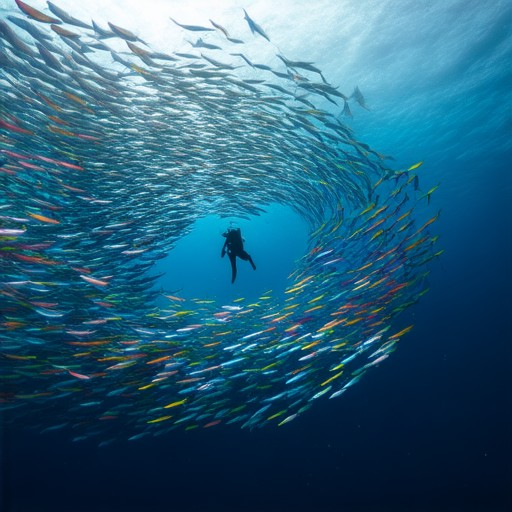
Top Marine Photography Tips for Capturing Stunning Underwater Shots
Mastering marine photography requires a blend of technical expertise and artistic vision. Here are expert tips to help you capture breathtaking underwater shots:
1. Lighting
Lighting is the most critical factor in underwater photography. Natural light filters through water, which softens and diffuses it. To maximize lighting effects:
- Shoot during midday when sunlight penetration is strongest.
- Use a ring light or external flash for dramatic lighting effects.
- Look for shaded areas to minimize harsh shadows.
2. Composition
A well-composed shot can elevate your underwater photography to new heights. Consider these composition techniques:
- Apply the Rule of Thirds for balanced compositions.
- Use leading lines and diagonals to guide the viewer’s eye.
- Incorporate diverse elements like coral, fish, and plants for visual interest.
3. Equipment
Investing in the right gear ensures your underwater shots are crisp and vibrant. Essential equipment includes:
- A high-quality underwater camera with fast autofocus.
- Wide-angle lenses for capturing vast underwater scenes.
- External lighting solutions for better illumination.
- Neutral density (ND) filters to control light exposure.
4. Post-Processing
Transform your raw shots into stunning visuals with post-processing techniques:
- Adjust colors using editing software like Adobe Lightroom or Photoshop.
- Correct color balance and enhance contrast.
- Remove unwanted objects or distractions from the frame.
5. Patience and Timing
Capture the perfect moment by being patient and observant:
- Wait for the right lighting conditions and subject positioning.
- Stay calm to avoid disturbing the underwater environment.
- Be prepared to adapt quickly to changing conditions.
Share Your Work
Ready to showcase your underwater photography skills? Submit your best shots to the Sailing Photo Awards and let your creativity shine!
By following these tips, you’ll be well on your way to capturing stunning underwater photographs that truly bring the ocean to life.
Top Marine Photography Tips for Professional-Quality Images
Marine photography offers a unique challenge due to its dynamic environments and diverse subjects. To capture stunning marine life, follow these expert tips:
1. Choose the Right Equipment
- Underwater Housing: Invest in a high-quality underwater housing to protect your camera and allow shooting in shallow waters without water entering.
- Wide-Angle Lens: A wide-angle lens is ideal for capturing the vastness of the ocean, ensuring more of the scene is included in the frame.
- Stable Tripod: Use a sturdy tripod to keep your camera steady, especially in rough conditions or when shooting from a boat.
- External Flash: Consider an external flash for better lighting control, especially when shooting macro subjects or backlit scenes.
2. Master Composition
- Rule of Thirds: Apply the rule of thirds to frame your subject, ensuring it is positioned to lead the eye through the image.
- Leading Lines: Use lines in the foreground (e.g., waves or boat ropes) to draw the viewer’s attention towards your subject.
- Symmetry and Patterns: Look for natural symmetry or patterns in the environment, such as a school of fish swimming in formation.
- Brightness Balance: Ensure that the horizon is correctly exposed to avoid a dark sky or overexposed water reflections.
3. Lighting Strategies
- Golden Hour: Shoot during sunrise or sunset for warm, soft lighting that enhances the colors of the ocean and its inhabitants.
- Softbox Lighting: Use a softbox or diffused light source to minimize harsh shadows and flatten lighting for underwater shots.
- Shooting into the Light: Position yourself so the sunlight is coming from behind your subject to create dramatic lighting effects.
- Avoid Harsh Midday Light: Steer clear of midday sun, which can cause strong shadows and washed-out colors in the water.
4. Technique Tips
- Slow Shutter Speed: Use slower shutter speeds to capture motion blur, such as the movement of a surfer or a passing dolphin.
- Long Exposures: Experiment with long exposures for silky-smooth water effects, especially when shooting from a stationary position.
- Macro Shooting: Get close to your subject to capture intricate details, such as the texture of an anemone or the eyes of a fish.
- Composition for Depth: Include elements in the foreground, middle ground, and background to create layers in your image.
5. Post-Processing
- Adjust White Balance: Correct white balance to ensure accurate color representation, especially in varying light conditions.
- Remove Distractions: Edit out unwanted elements like boat ropes, floating debris, or people in the frame.
- Sharpen Your Images: Enhance detail and clarity using sharpening tools to bring out textures in the subject and background.
- Color Correction: Adjust hues to ensure the colors pop and appear naturally, especially in underwater shots.
6. Common Mistakes to Avoid
- Overexposure: Avoid blowing out the highlights, especially on the water and sky.
- Underexposure: Ensure the subject is properly lit to prevent darkened areas in the frame.
- Unstable Shots: Use a tripod to avoid blurry images caused by movement.
- Forget About Reflections: Be mindful of reflections off the water surface to avoid distracting elements in your shot.
By mastering these tips, you can elevate your marine photography to professional standards and capture the beauty of the ocean like never before. Explore more resources and inspiration at Sailing Photo Awards to discover additional techniques and galleries featuring stunning marine imagery.
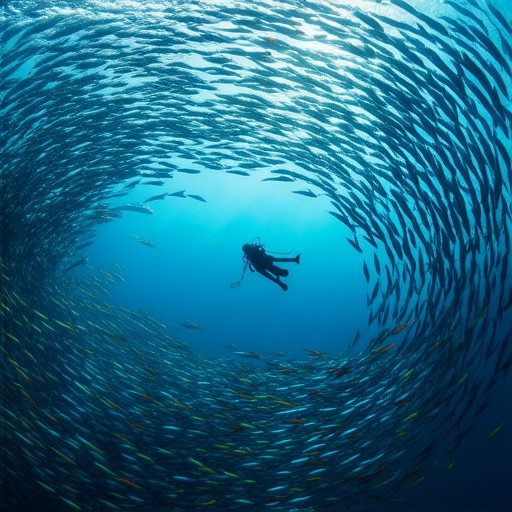
Top Marine Photography Tips for Captivating Underwater and Surface Shots
Mastering marine photography requires a blend of technical skill and artistic vision. Whether you’re diving beneath the waves or capturing the essence of the open sea, these tips will help you craft stunning images that stand out.
1. Choose the Right Equipment
- Camera Gear: Invest in a high-quality underwater camera or a DSLR with a waterproof housing. Look for models with excellent low-light performance and fast autofocus capabilities.
- Lens Selection: Use wide-angle lenses for capturing the vastness of the ocean, and macro lenses for close-ups of marine life. Polarizing filters can enhance colors and reduce glare.
- Lighting Setup: Consider using external flashes for better control over lighting, especially when shooting underwater where natural light can be limited.
2. Composition Techniques
- Framing: Pay attention to your framing to highlight the subject and create a balanced composition. Look for unique perspectives that emphasize the scale and beauty of the ocean.
- Symmetry and Patterns: Capture symmetrical scenes or patterns in nature, such as wave formations or school of fish, which can add visual interest to your photos.
- Rule of Thirds: Apply the rule of thirds to guide your composition, ensuring that the subject is positioned to lead the viewer’s eye through the frame.
3. Lighting Strategies
- Golden Hour: Shoot during the golden hour, either at sunrise or sunset, to take advantage of soft, diffused light that enhances textures and colors.
- Underwater Lighting: Use natural light filtered through water, which can create dramatic effects. Experiment with backlighting to add depth and dimension to your shots.
- Shadow Control: Position yourself so that shadows fall away from your subject, or use fill lights to eliminate unwanted darkness in your frames.
4. Post-Processing Magic
- Color Correction: Adjust white balance to ensure accurate color representation, especially when moving between air and water environments.
- Contrast Enhancement: Use editing software to boost contrast and clarify details, particularly in underwater shots where visibility can be challenging.
- Sharpness Adjustment: Fine-tune sharpness to ensure your subjects are crisp and clear, avoiding any blurring caused by movement or depth of field.
5. Capture the Moment
- Panning: For fast-moving subjects like dolphins or flying fish, pan the camera to follow their motion and freeze the action in mid-frame.
- Timing: Wait for the perfect moment when the light, composition, and subject align. Patience is key in marine photography.
- Breathing Techniques: Stay calm and controlled, especially when photographing delicate marine life. Avoid sudden movements to avoid scaring your subjects.
6. Explore Unique Angles
- Low Angle Shots: Get down to the level of your subjects to capture their world from their perspective, whether it’s a schools of fish or a lone seagull.
- Aerial Views: Try flying a drone to capture broad, bird’s-eye views of the ocean and its surroundings, adding a unique perspective to your portfolio.
- Reflections and Silhouettes: Use reflections off the water’s surface or silhouettes against the horizon to create visually striking images.
7. Document the Environment
- Include Context: Don’t just focus on the subject; show the environment that surrounds it. A shipwreck photo is more compelling when you include the crashing waves and the vast expanse of the sea.
- Capture the Mood: Let your photos tell a story. Whether it’s the serene tranquility of a calm bay or the power of a stormy seascape, convey the atmosphere through your lens.
- Consider the Background: Ensure the background isn’t distracting. Use the surrounding elements to complement your subject rather than draw attention away from it.
8. Edit and Share
- Edit for Impact: After capturing your shots, edit them to enhance color, contrast, and clarity. Remove distractions and adjust the composition as needed.
- Share Your Work: Showcase your marine photography on platforms like Instagram, Facebook, or specialized photography communities. Join groups dedicated to marine photography to connect with fellow enthusiasts and get feedback on your work.
By applying these tips, you’ll be well on your way to capturing stunning underwater and surface shots that truly reflect the beauty of the marine world. Remember to explore, experiment, and enjoy the process!
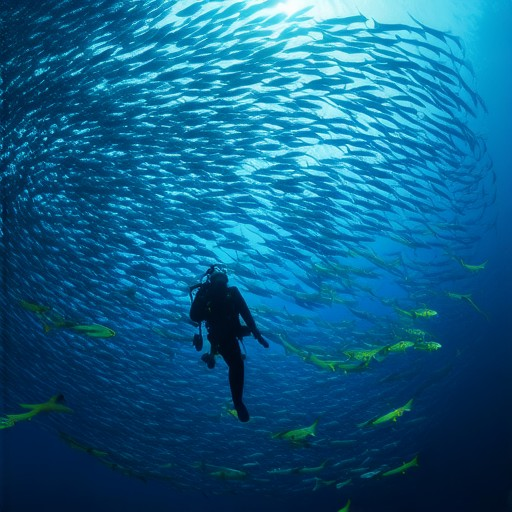
Top Marine Photography Tips for Captivating Underwater and Surface Shots
Mastering marine photography requires a blend of technical skill and artistic vision. Whether you’re diving beneath the waves or capturing the essence of the open sea, these tips will help you craft stunning images that stand out.
1. Choose the Right Equipment
- Camera Gear: Invest in a high-quality underwater camera or a DSLR with a waterproof housing. Look for models with excellent low-light performance and fast autofocus capabilities.
- Lens Selection: Use wide-angle lenses for capturing the vastness of the ocean, and macro lenses for close-ups of marine life. Polarizing filters can enhance colors and reduce glare.
- Lighting Setup: Consider using external flashes for better control over lighting, especially when shooting underwater where natural light can be limited.
2. Composition Techniques
- Framing: Pay attention to your framing to highlight the subject and create a balanced composition. Look for unique perspectives that emphasize the scale and beauty of the ocean.
- Symmetry and Patterns: Capture symmetrical scenes or patterns in nature, such as wave formations or school of fish, which can add visual interest to your photos.
- Rule of Thirds: Apply the rule of thirds to guide your composition, ensuring that the subject is positioned to lead the viewer’s eye through the frame.
3. Lighting Strategies
- Golden Hour: Shoot during the golden hour, either at sunrise or sunset, to take advantage of soft, diffused light that enhances textures and colors.
- Underwater Lighting: Use natural light filtered through water, which can create dramatic effects. Experiment with backlighting to add depth and dimension to your shots.
- Shadow Control: Position yourself so that shadows fall away from your subject, or use fill lights to eliminate unwanted darkness in your frames.
4. Post-Processing Magic
- Color Correction: Adjust white balance to ensure accurate color representation, especially when moving between air and water environments.
- Contrast Enhancement: Use editing software to boost contrast and clarify details, particularly in underwater shots where visibility can be challenging.
- Sharpness Adjustment: Fine-tune sharpness to ensure your subjects are crisp and clear, avoiding any blurring caused by movement or depth of field.
5. Capture the Moment
- Panning: For fast-moving subjects like dolphins or flying fish, pan the camera to follow their motion and freeze the action in mid-frame.
- Timing: Wait for the perfect moment when the light, composition, and subject align. Patience is key in marine photography.
- Breathing Techniques: Stay calm and controlled, especially when photographing delicate marine life. Avoid sudden movements to avoid scaring your subjects.
6. Explore Unique Angles
- Low Angle Shots: Get down to the level of your subjects to capture their world from their perspective, whether it’s a schools of fish or a lone seagull.
- Aerial Views: Try flying a drone to capture broad, bird’s-eye views of the ocean and its surroundings, adding a unique perspective to your portfolio.
- Reflections and Silhouettes: Use reflections off the water’s surface or silhouettes against the horizon to create visually striking images.
7. Document the Environment
- Include Context: Don’t just focus on the subject; show the environment that surrounds it. A shipwreck photo is more compelling when you include the crashing waves and the vast expanse of the sea.
- Capture the Mood: Let your photos tell a story. Whether it’s the serene tranquility of a calm bay or the power of a stormy seascape, convey the atmosphere through your lens.
- Consider the Background: Ensure the background isn’t distracting. Use the surrounding elements to complement your subject rather than draw attention away from it.
8. Edit and Share
- Edit for Impact: After capturing your shots, edit them to enhance color, contrast, and clarity. Remove distractions and adjust the composition as needed.
- Share Your Work: Showcase your marine photography on platforms like Instagram, Facebook, or specialized photography communities. Join groups dedicated to marine photography to connect with fellow enthusiasts and get feedback on your work.
By applying these tips, you’ll be well on your way to capturing stunning underwater and surface shots that truly reflect the beauty of the marine world. Remember to explore, experiment, and enjoy the process!
Top Marine Photography Tips for Captivating Underwater and Surface Shots
Mastering marine photography requires a blend of technical skill and artistic vision. Whether you’re diving beneath the waves or capturing the essence of the open sea, these tips will help you craft stunning images that stand out.
1. Choose the Right Equipment
- Camera Gear: Invest in a high-quality underwater camera or a DSLR with a waterproof housing. Look for models with excellent low-light performance and fast autofocus capabilities.
- Lens Selection: Use wide-angle lenses for capturing the vastness of the ocean, and macro lenses for close-ups of marine life. Polarizing filters can enhance colors and reduce glare.
- Lighting Setup: Consider using external flashes for better control over lighting, especially when shooting underwater where natural light can be limited.
2. Composition Techniques
- Framing: Pay attention to your framing to highlight the subject and create a balanced composition. Look for unique perspectives that emphasize the scale and beauty of the ocean.
- Symmetry and Patterns: Capture symmetrical scenes or patterns in nature, such as wave formations or school of fish, which can add visual interest to your photos.
- Rule of Thirds: Apply the rule of thirds to guide your composition, ensuring that the subject is positioned to lead the viewer’s eye through the frame.
3. Lighting Strategies
- Golden Hour: Shoot during the golden hour, either at sunrise or sunset, to take advantage of soft, diffused light that enhances textures and colors.
- Underwater Lighting: Use natural light filtered through water, which can create dramatic effects. Experiment with backlighting to add depth and dimension to your shots.
- Shadow Control: Position yourself so that shadows fall away from your subject, or use fill lights to eliminate unwanted darkness in your frames.
4. Post-Processing Magic
- Color Correction: Adjust white balance to ensure accurate color representation, especially when moving between air and water environments.
- Contrast Enhancement: Use editing software to boost contrast and clarify details, particularly in underwater shots where visibility can be challenging.
- Sharpness Adjustment: Fine-tune sharpness to ensure your subjects are crisp and clear, avoiding any blurring caused by movement or depth of field.
5. Capture the Moment
- Panning: For fast-moving subjects like dolphins or flying fish, pan the camera to follow their motion and freeze the action in mid-frame.
- Timing: Wait for the perfect moment when the light, composition, and subject align. Patience is key in marine photography.
- Breathing Techniques: Stay calm and controlled, especially when photographing delicate marine life. Avoid sudden movements to avoid scaring your subjects.
6. Explore Unique Angles
- Low Angle Shots: Get down to the level of your subjects to capture their world from their perspective, whether it’s a schools of fish or a lone seagull.
- Aerial Views: Try flying a drone to capture broad, bird’s-eye views of the ocean and its surroundings, adding a unique perspective to your portfolio.
- Reflections and Silhouettes: Use reflections off the water’s surface or silhouettes against the horizon to create visually striking images.
7. Document the Environment
- Include Context: Don’t just focus on the subject; show the environment that surrounds it. A shipwreck photo is more compelling when you include the crashing waves and the vast expanse of the sea.
- Capture the Mood: Let your photos tell a story. Whether it’s the serene tranquility of a calm bay or the power of a stormy seascape, convey the atmosphere through your lens.
- Consider the Background: Ensure the background isn’t distracting. Use the surrounding elements to complement your subject rather than draw attention away from it.
8. Edit and Share
- Edit for Impact: After capturing your shots, edit them to enhance color, contrast, and clarity. Remove distractions and adjust the composition as needed.
- Share Your Work: Showcase your marine photography on platforms like Instagram, Facebook, or specialized photography communities. Join groups dedicated to marine photography to connect with fellow enthusiasts and get feedback on your work.
By applying these tips, you’ll be well on your way to capturing stunning underwater and surface shots that truly reflect the beauty of the marine world. Remember to explore, experiment, and enjoy the process!
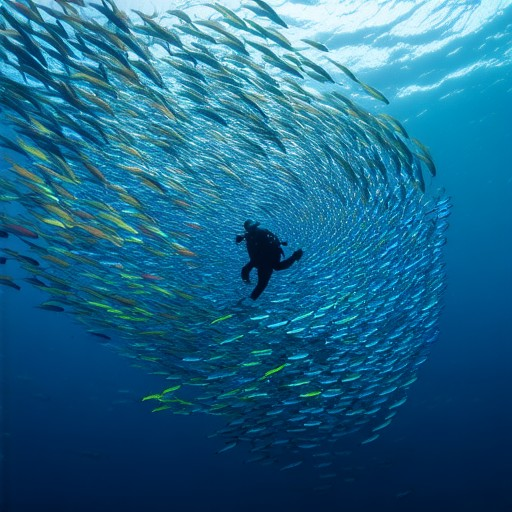
Top Marine Photography Tips for Captivating Underwater and Surface Shots
Mastering marine photography requires a blend of technical expertise and artistic vision. Here are expert-recommended tips to help you capture stunning underwater and surface shots:
- Plan and Prepare Thoroughly
- Research your destination: Understand the local wildlife, water conditions, and lighting patterns.
- Equip yourself properly: Invest in a sturdy underwater housing, high-quality lenses, and durable gear.
- Stay patient and observant: Marine life can be unpredictable, so remain calm and ready to capture the perfect moment.
- Underwater Shooting Essentials
- Focal length matters: Use wide-angle lenses for vast underwater scenes and macro lenses for intricate details.
- Lighting is key: Look for soft sunlight filtering through water or dramatic shafts of light created by coral reefs.
- Panning shots: Frame your subject within the environment to convey scale and context.
- Composition tricks: Experiment with patterns, symmetry, and leading lines to create visually appealing shots.
- Surface Photography Techniques
- Golden hours: Capture stunning surface shots during sunrise or sunset for warm, vibrant colors and soft lighting.
- Reflections and silhouettes: Use reflections off the water’s surface to enhance your shots, and frame your subject against the sky for dramatic silhouettes.
- Weather conditions: Calm waters provide ideal opportunities for mirror-like reflections, while rough seas can add dynamic motion to your shots.
- Boats and horizon: Compose shots that lead the eye towards the horizon or include boats for scale and perspective.
- Edit for Success
- Post-processing: Adjust color balance, contrast, and lighting to bring out details and enhance the mood of your photos.
- Remove distractions: Edit out unwanted objects or people from your frames to keep the focus on the subject.
- Sharpen wisely: Apply selective sharpening to avoid over-sharpening and preserve fine details.
- Join the Community
- Engage with fellow enthusiasts: Share your work and learn from others by participating in online forums and communities like Sailing Photo Awards .
- Stay updated: Follow maritime photography blogs, watch tutorials, and explore resources to keep your skills sharp.
Conclusion : Mastering marine photography takes practice and a keen eye for detail. By focusing on lighting, composition, and post-processing, you can create unforgettable underwater and surface shots that truly capture the essence of the ocean. Don’t forget to share your creations and connect with the passionate photography community to inspire future adventures underwater!
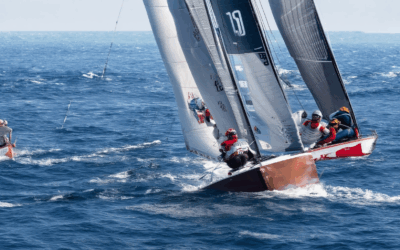
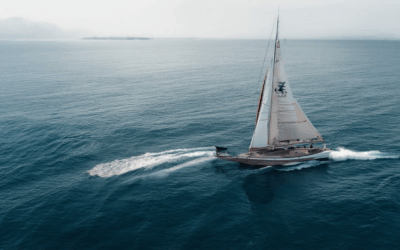
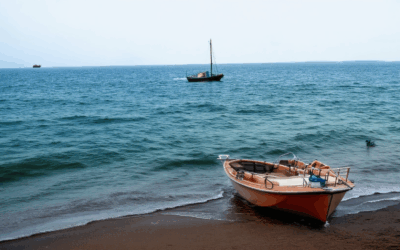
0 Comments